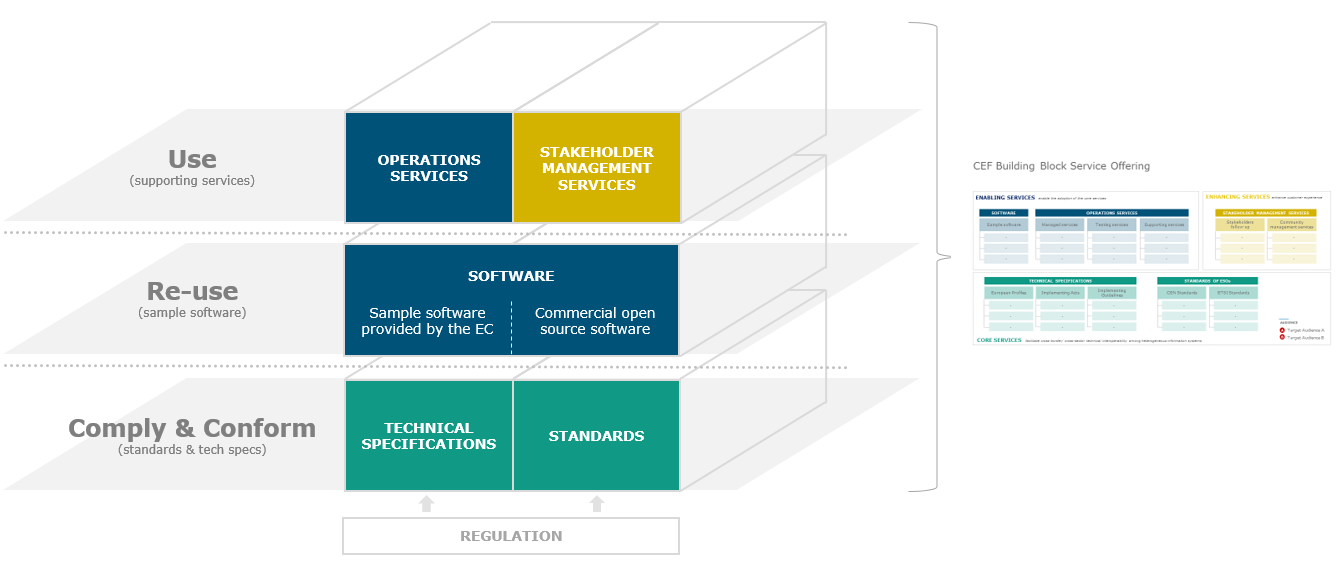Building Blocks
Let’s start with Connecting Europe Facility[2] and its Building Blocks[3], what are they? The European Union realise that internet and digital technologies are transforming our world. A true statement. They also see is that the digital landscape is becoming more diverse, creating challenges for cross-border interoperability and intercommunication. Europe is about working together but, Europeans still face barriers when using (cross-border) online tools and services. The implications are considerable. EU citizens can miss out on goods and services and businesses in the EU miss out on market potential, while also the different governments in EU cannot fully benefit from digital technologies. The EU has therefore described the Digital Single Market[4] (DSM) through which it aims to overcome these challenges by creating the right environment for digital networks and services to flourish. The DSM is not only achieved by setting the right regulatory conditions, but also by providing cross-border digital infrastructures and services. So, to support the DSM, the Connecting Europe Facility (CEF) programme is funding a set of generic and reusable Digital Service Infrastructures (DSI), also known as Building Blocks. The CEF building blocks offer basic capabilities that can be reused in any European project to facilitate the delivery of digital public services across borders and sectors. Currently, there are eight building blocks: Big Data Test Infrastructure, Context Broker, eArchiving, eDelivery, eID, eInvoicing, eSignature and eTranslation. The main part of CEF is a Core Service Platform, provided and maintained by the European Commission. Depending on the building block, the Core Service Platform may include technical specifications, sample software and supporting services (funding for the European Commission). The CEF building blocks offer basic capabilities that can be used in any European project to facilitate the delivery of digital public services across borders. The basis for the CEF Building Blocks are interoperability agreements between European Union member states. The aim of the Building Blocks is thus to ensure interoperability between IT systems so that citizens, businesses and administrations can benefit from seamless digital public services wherever they may be in Europe.

The Building block layers.
For each building block the European Commission provides a Core Service Platform which consists of three layers:
At the core of each building block is a layer of technical specifications and standards that have to be complied with;
To facilitate the implementation of the technical specifications and standards, a layer of sample software that complies with them and is meant for reuse (for certain building blocks only);
To facilitate the adoption of the technical specifications and standards, a layer of services (e.g. conformance testing, help desks, onboarding services, etc.) meant for use (which varies depending on the Building Block).
All this means that the Building Blocks can be combined and used in projects in any domain or sector at European, national or local level.
[2]https://ec.europa.eu/digital-single-market/en/connecting-europe-facility
[3]https://ec.europa.eu/cefdigital/wiki/display/CEFDIGITAL/CEF+Digital+Home